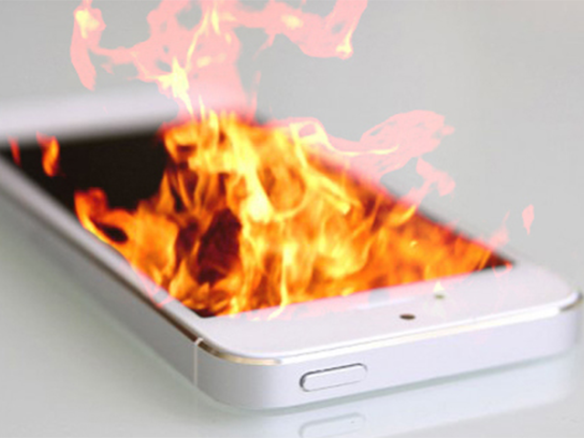Most everyone has had the experience of picking up their smartphone and feeling that it’s a bit hotter than normal.

When this happens, the first thing you should do is check the device’s battery statistics to see if there’s anything odd going on. The only two components within the phone that can produce heat are its battery and CPU.
If the battery stats page says the device’s screen is taking up the most energy, then it means you’re using the device too much (on average, it should take up 5 to 7% of the device’s battery drain). Turn the device off and allow it to sit for five to 10 minutes.
If, on the other hand, a particular app looks to be the culprit, then you’ll want to force stop it and restart the program in just a bit. If an app is taking up 10%+ of the phone’s battery drain, it’ll take up a lot of the CPU cycle which, in turn, will drain the phone’s battery faster, and cause the device to overheat. The most oft-cited app that causes overheating issues is the device’s camera program. When too many pictures are being taken over an extended period of time, or a lot of video is being recorded, it forces the rest of the device’s components to work that much harder that much longer, and the best way to expel the extra energy being used is by releasing heat.
Lastly, if neither the screen nor an app is acting out of ordinary, then chances are, the extra heat coming from the device is an indication that the battery is reaching the end of its life and needs to be replaced. On average, a phone battery lasts three to five years. Most users replace their device before this timeframe so it’s not an oft-cited issue, but if you happen to have an older model phone that is beginning to show signs of overheating regularly, chances are, it needs a new portable power source.
Some tips to avoid overheating in your smartphone: adjust the screen’s brightness levels. Most users leave their screen’s brightness level at its highest because it is at this level that the colors are most vibrant and pictures are their clearest. What most do not realize is that setting the brightness levels at 50% is actually not that different from the brightest settings, and it saves the device from having to do a lot of extra work; this, in turn, helps the battery to last longer. Some phones even have an option to have the screen’s brightness auto-adjust based on the room’s level of brightness.
Additionally, turn off connectivity options when they’re not in use. When things like Bluetooth, GPS, and WiFi programs are left on, they are constantly scanning for connection points. Being mindful of turning these programs off when they’re not in use will save the phone from having to do a lot of pointless, background work.
Lastly, if you have your phone in a case, check out its points of ventilation. These cases keep the phone insulated, which keeps heat in, and cold out; however, as the phone gets warmer, it needs a way to radiate the heat away. If a case is improperly designed for a particular model of phone, the insulated material will keep the heat in which will cause the device to overheat. The same thing can happen if a phone is left in the user’s pocket for too long too.
A smartphone that overheats regularly can lessen its lifespan. Taking extra steps to avoid this sort of occurrence, and being mindful of overusing the device, will lead to it performing better and lasting much, much longer.
Advertisement
Learn more about Electronic Products Magazine





